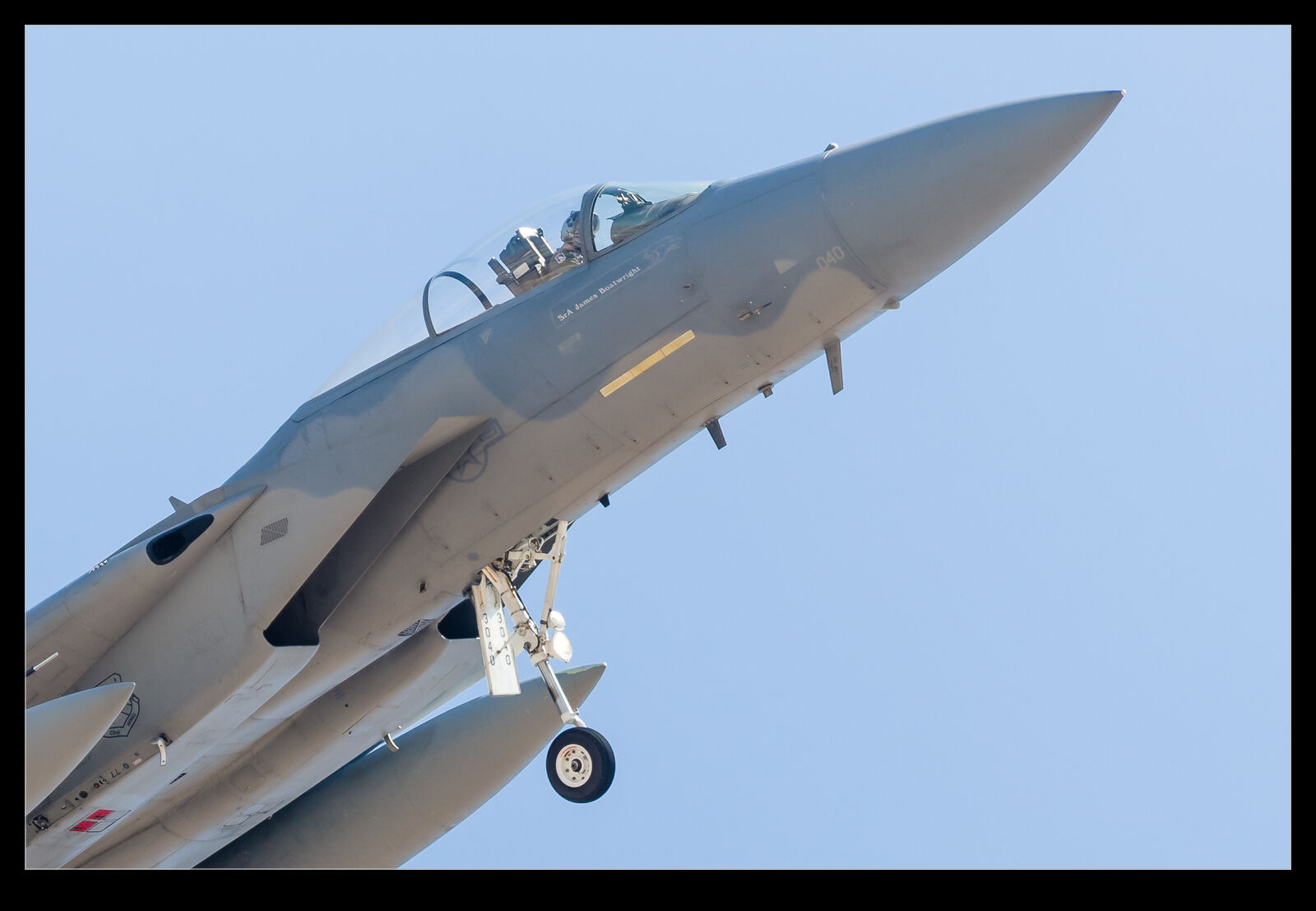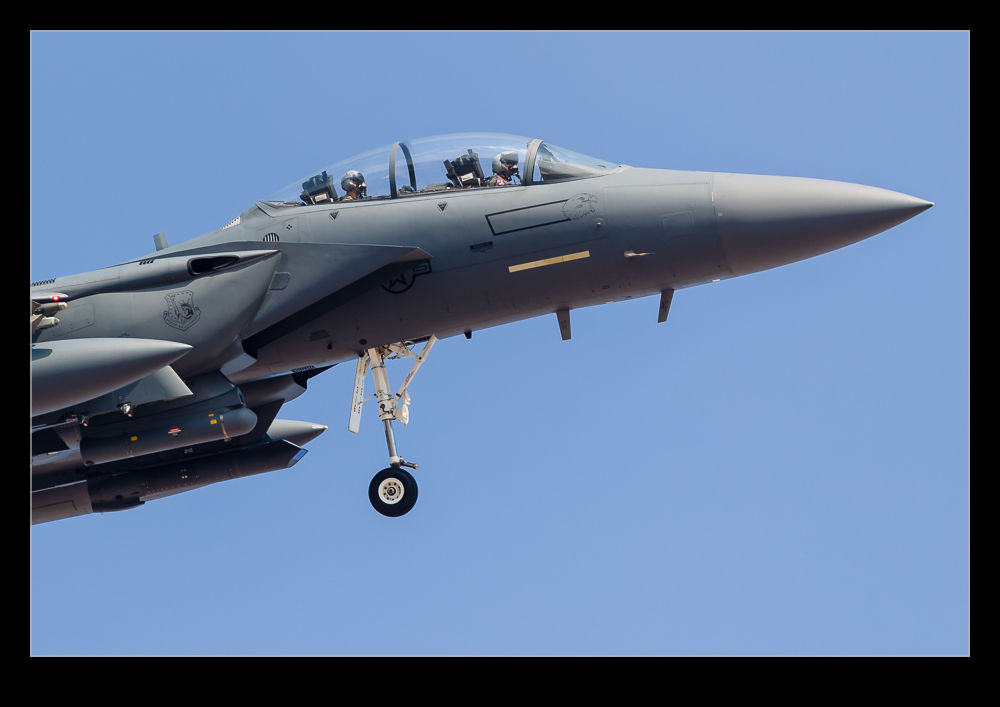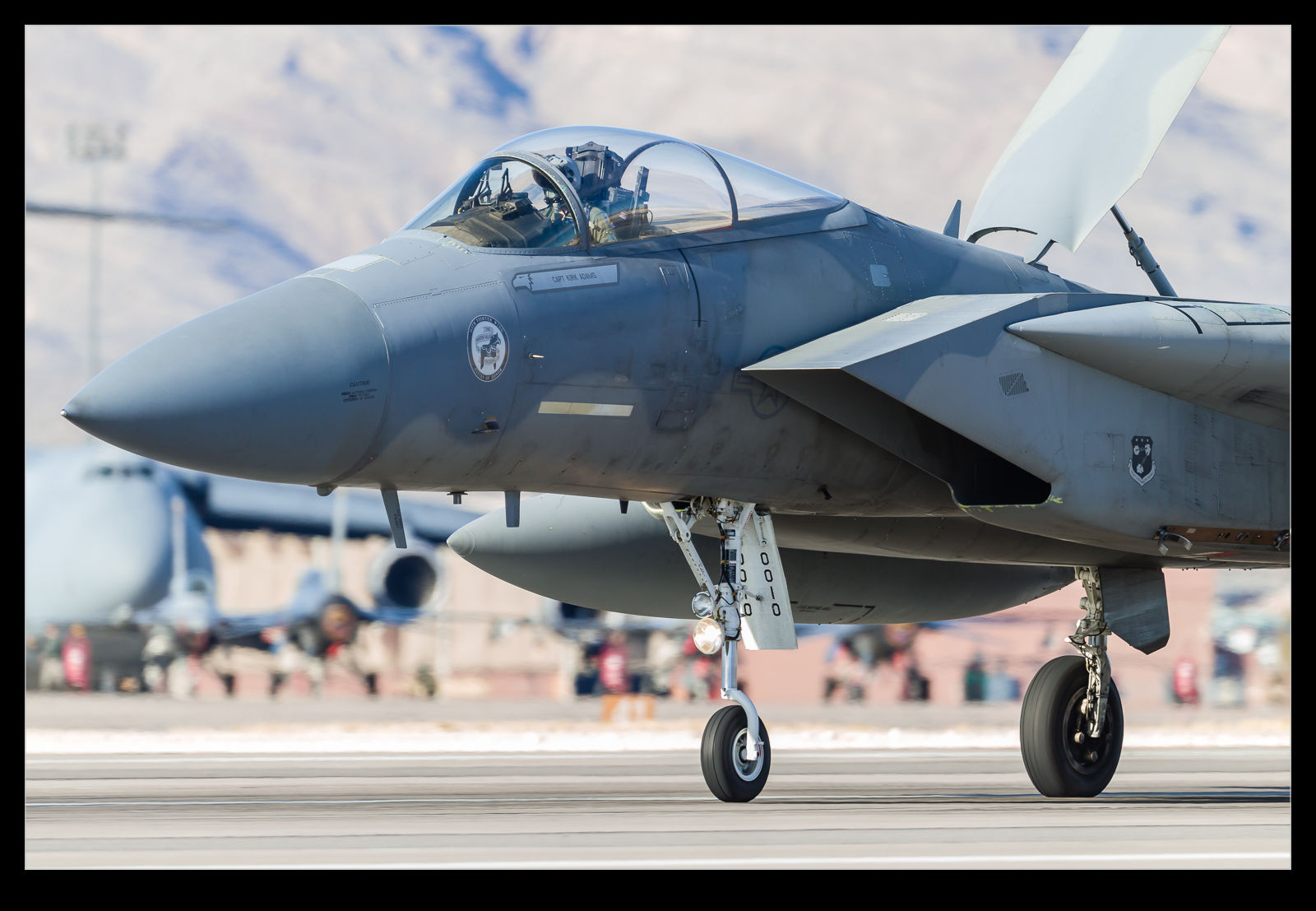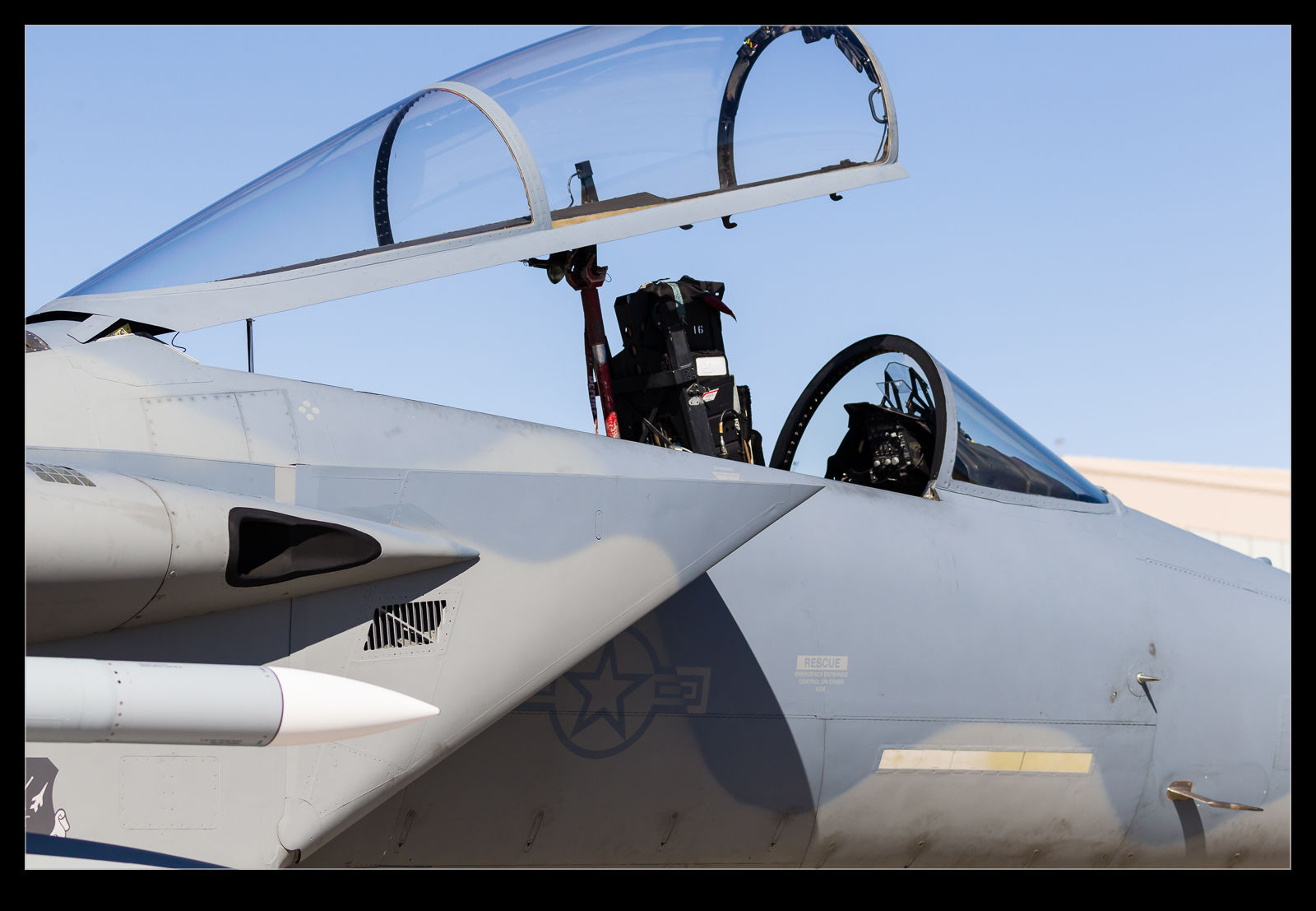 The F-15 came onto the scene in the 1970s and it has been a major force ever since. As a kid growing up fascinated with planes, the F-15 and F-14 were two of my favorites. They each had features I loved. One of the cool things about the F-15 for me was the inlets. Big ramp inlets were in vogue at that time. They combined an angled profile with complex ramps and doors to take flows from above Mach 2 down to subsonic speeds to feed the engines. (Interestingly the F-16 went with a simple pitot inlet and could still just about make Mach 2. It used the fuselage to redirect the air into the inlet rather than raking it.) The F-14 inlets were very sharply angled. The F-15 didn’t have such a sharp angle but instead took a different approach. The inlets rotated down towards the approaching air.
The F-15 came onto the scene in the 1970s and it has been a major force ever since. As a kid growing up fascinated with planes, the F-15 and F-14 were two of my favorites. They each had features I loved. One of the cool things about the F-15 for me was the inlets. Big ramp inlets were in vogue at that time. They combined an angled profile with complex ramps and doors to take flows from above Mach 2 down to subsonic speeds to feed the engines. (Interestingly the F-16 went with a simple pitot inlet and could still just about make Mach 2. It used the fuselage to redirect the air into the inlet rather than raking it.) The F-14 inlets were very sharply angled. The F-15 didn’t have such a sharp angle but instead took a different approach. The inlets rotated down towards the approaching air.
 This always struck me as a cool feature and whenever I see F-15s now, I am always looking at the angle of the inlets. Since they are often at lower speeds when I get to shoot them, they are at higher angles of attack and this means the inlets are rotated down. McAir’s engineers did a great job of the joint so the top surface doesn’t look too discontinuous. I include a shot of a parked jet to show the difference. Even after all these years, I still get a kick out of this.
This always struck me as a cool feature and whenever I see F-15s now, I am always looking at the angle of the inlets. Since they are often at lower speeds when I get to shoot them, they are at higher angles of attack and this means the inlets are rotated down. McAir’s engineers did a great job of the joint so the top surface doesn’t look too discontinuous. I include a shot of a parked jet to show the difference. Even after all these years, I still get a kick out of this.

